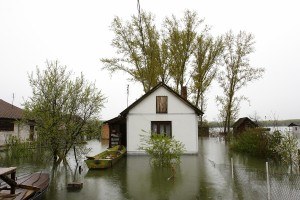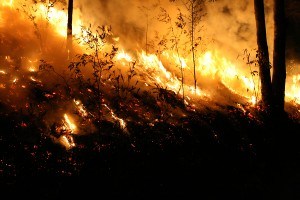Munich Re’s HSB Canada launched a collection of cyber insurance and services designed to protect small and medium-size businesses. Brit Ltd., the London-based specialty insurer and reinsurer, has created a machine-learning algorithm designed to accelerate the identification of post-catastrophe property damage, based on the use of ultra-high-resolution imagery. Karen Clark & Co. has released Version 1.0 of its high-resolution U.S. Wildfire Model.
***
HSB Canada, part of Munich Re, has introduced HSB Cyber Suite, a comprehensive collection of cyber insurance and services designed to protect small and medium-size businesses from cyber-attacks, data breaches, identity theft, and cyber extortion.
 It is available through insurance carriers that partner with HSB Canada to add the coverage to their commercial policies.
It is available through insurance carriers that partner with HSB Canada to add the coverage to their commercial policies.
HSB Cyber Suite includes several optional coverage enhancements, such as:
- Identity Recovery, providing case management services and financial resources to recover control of insureds’ identities after identity theft.
- Business Income and Extra Expense coverage available during the period of restoration, in the event of a computer attack.
- Electronic Media Liability for legal action alleging copyright, trademark, and other types of infringement, defamation, or other personal injury resulting from information displayed on a website.
- Cyber Extortion, covering pre-approved negotiator or investigator costs and payments for eliminating ransomware or extortion threats.
***
Brit Ltd., the London-based specialty insurer and reinsurer, announced the creation and successful proof-of-concept launch of a proprietary machine-learning algorithm designed to accelerate the identification of post-catastrophe property damage, based on the use of ultra-high-resolution imagery.
 This proof of concept is being used by the Brit claims team and its delegated claims adjusters in the wake of Hurricane Ida, to further improve claims service and expedite payments for customers.
This proof of concept is being used by the Brit claims team and its delegated claims adjusters in the wake of Hurricane Ida, to further improve claims service and expedite payments for customers.
In this innovation, Brit’s Data Science team developed and overlaid a machine learning algorithm to access the ultra-high-resolution ariel images and data such that it pinpoints, color-codes, and displays properties by damage classification within days after a catastrophe event. This enables the Brit claims team to proactively identify, triage and assign response activity even before claims are reported.
Since April 2019, Brit has worked with the Geospatial Insurance Consortium (GIC), a non-profit organization that captures best in class post-event ariel imagery for first responders and insurance companies.
With the GIC images and the machine learning algorithm, the Brit claims team has a virtual claims adjusting platform that can expedite claims payments in locations that cannot be immediately serviced by local field adjusters in the initial days following catastrophe events.
***
Karen Clark & Co. (KCC), the Boston-based catastrophe modeling company, has released Version 1.0 of its high-resolution U.S. Wildfire Model.
 This advanced and fully probabilistic model provides exceedance probability (EP) curves, probable maximum losses (PMLs), and average annual losses (AALs) down to the location level and can be used to develop underwriting and pricing strategies that account for the impacts of climate change, the company explained in a statement.
This advanced and fully probabilistic model provides exceedance probability (EP) curves, probable maximum losses (PMLs), and average annual losses (AALs) down to the location level and can be used to develop underwriting and pricing strategies that account for the impacts of climate change, the company explained in a statement.
Along with the vapor pressure deficit, the KCC Wildfire Model accounts for high resolution fuels data, topography, wind speeds, road density, suppression activities, and other factors that influence the rate and direction of fire spread. The model also incorporates several important secondary building characteristics and mitigation features.
Insurers who license the KCC Wildfire Model also have access to KCC’s Live Events process for monitoring actual fires as they propagate and spread. Insurers can obtain their own high-resolution claims estimates in real time as events unfold for planning and strategy purposes.
The KCC Wildfire Model also comes with nine climate change scenarios, reflecting wildfire loss potential in three future years – 2025, 2030, and 2050 – and three of the Intergovernmental Panel on Climate Change (IPCC) Shared Socioeconomic Paths (SSPs), as provided in the latest IPCC report.
Sources: Munich Re’s HSB, Brit Ltd, and KCC





















 Good Times for U.S. P/C Insurers May Not Last; Auto Challenges Ahead
Good Times for U.S. P/C Insurers May Not Last; Auto Challenges Ahead  Executives on the Move at Liberty Mutual, Cowbell, W. R. Berkley
Executives on the Move at Liberty Mutual, Cowbell, W. R. Berkley  First Atlantic Hurricane Forecast for 2026 Suggests Season Close to 30-Year Norm
First Atlantic Hurricane Forecast for 2026 Suggests Season Close to 30-Year Norm  Why the Middle Market Matters and How Insurers Can Capture It
Why the Middle Market Matters and How Insurers Can Capture It 







